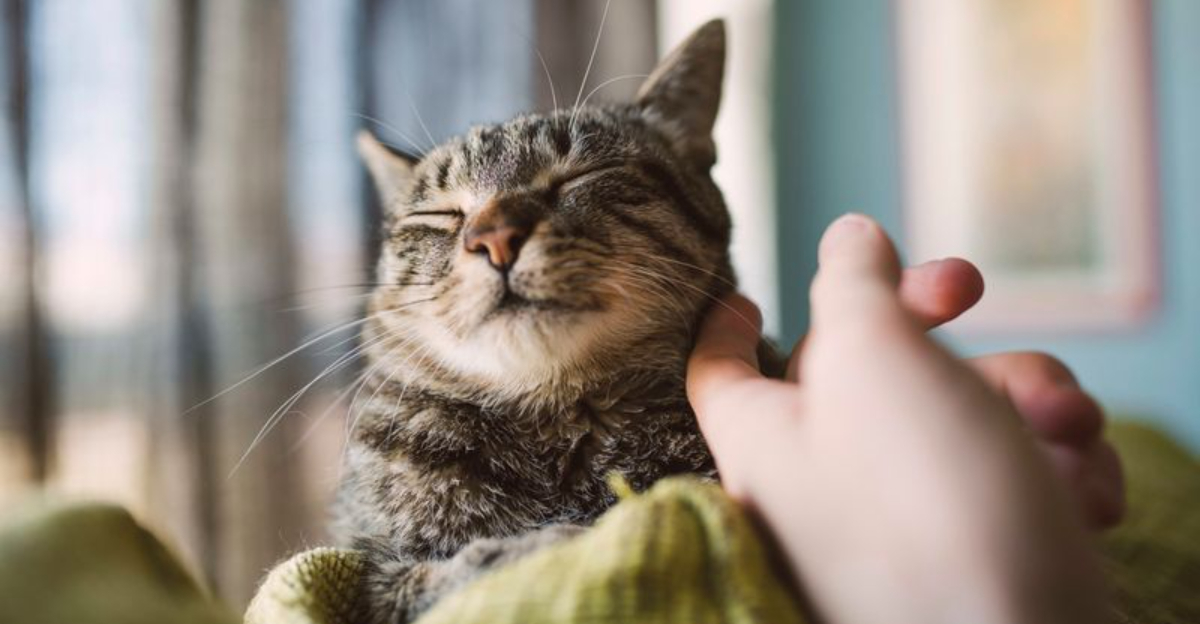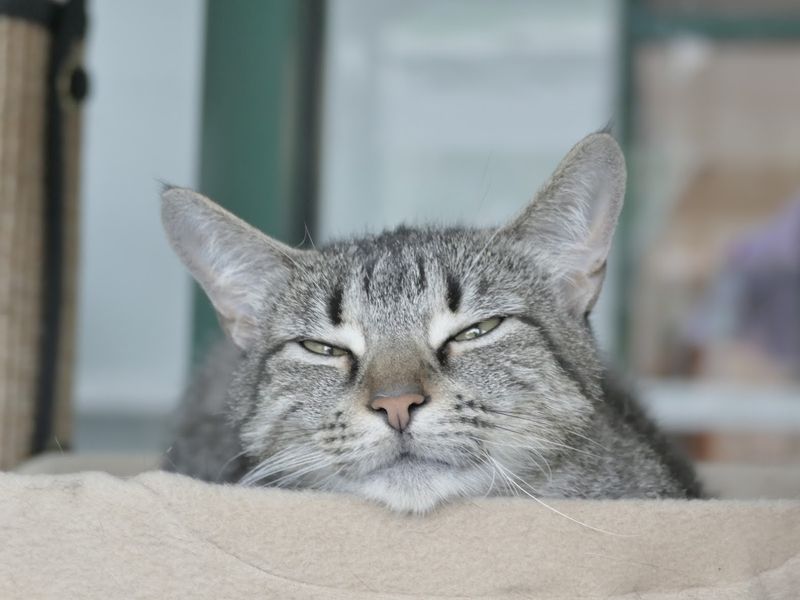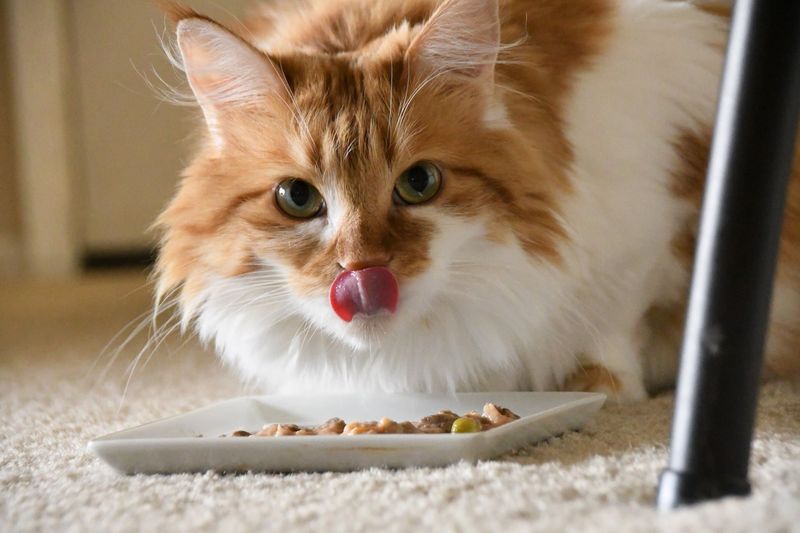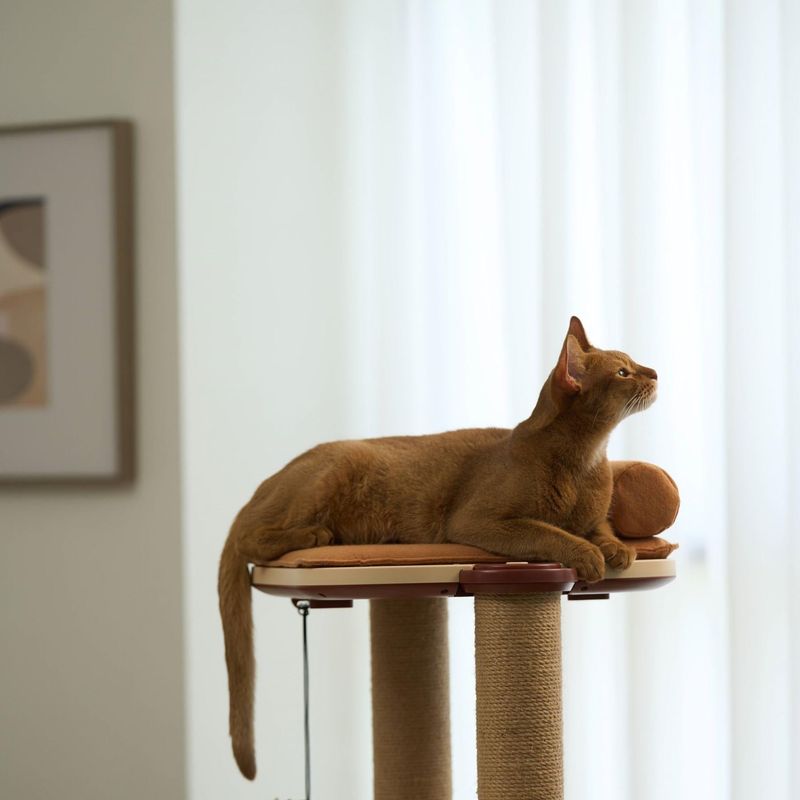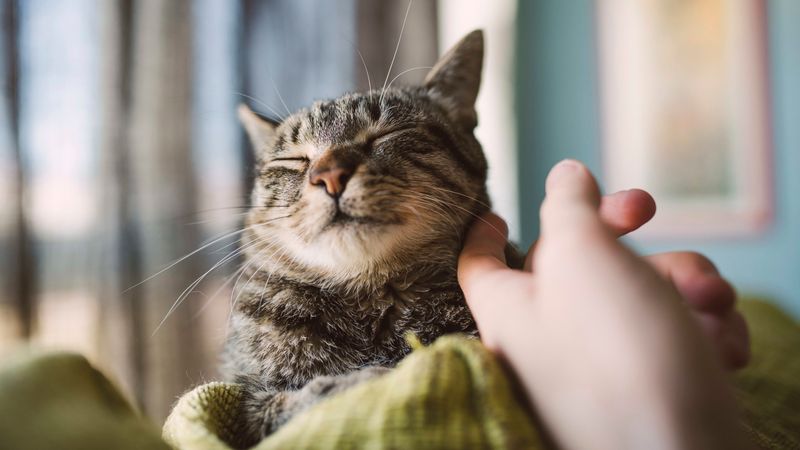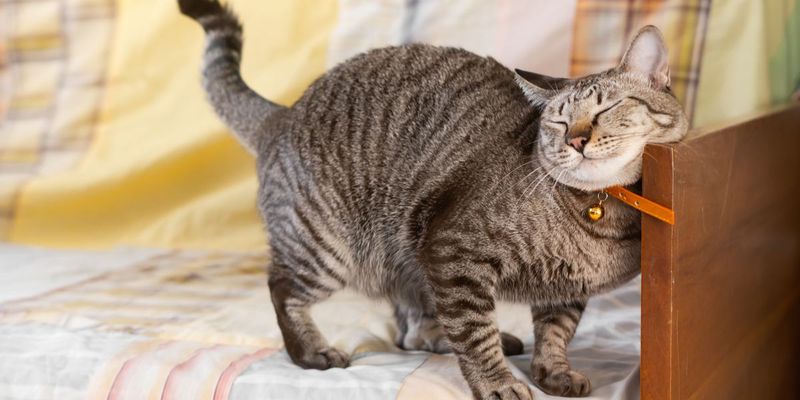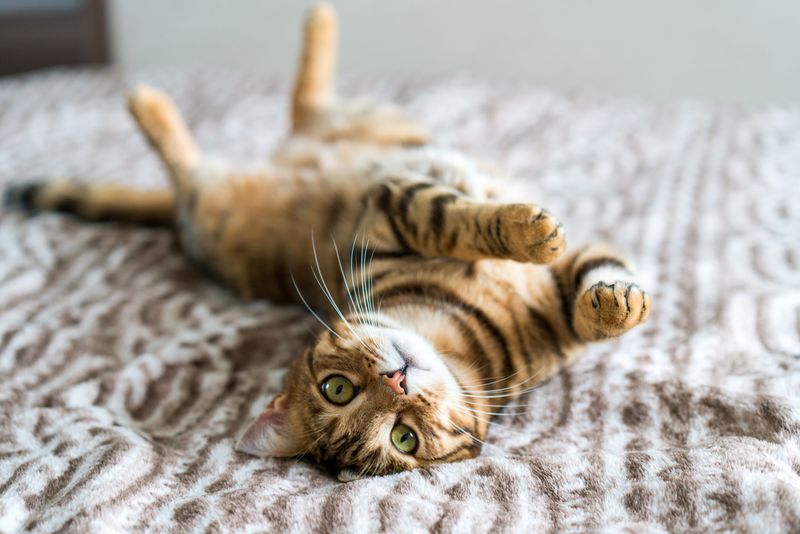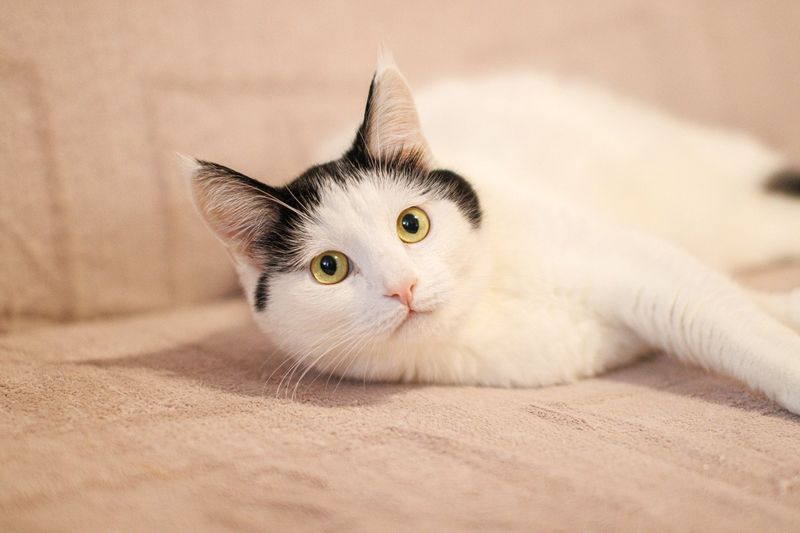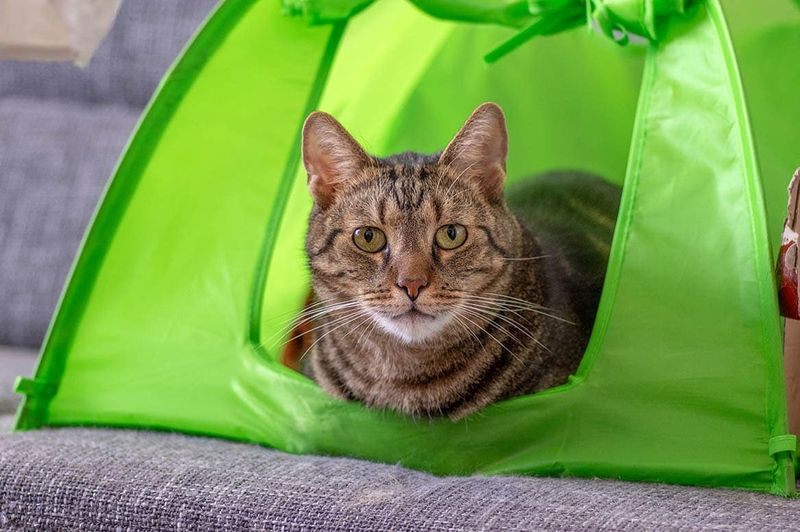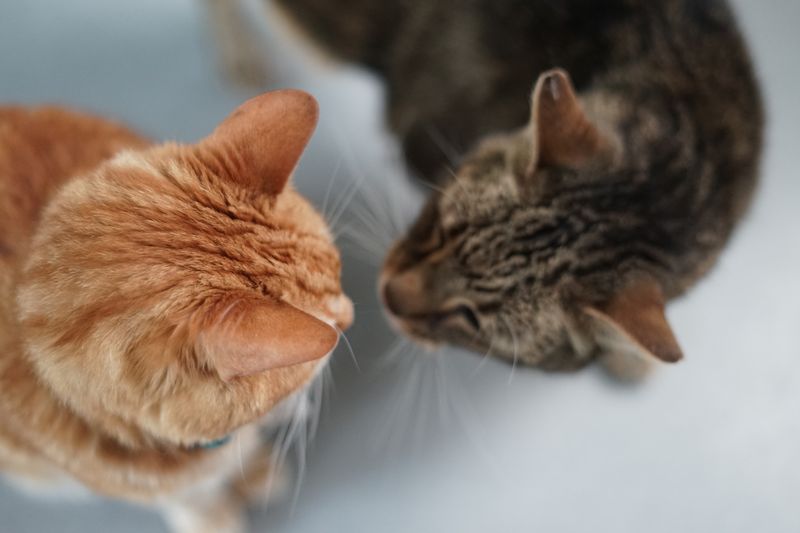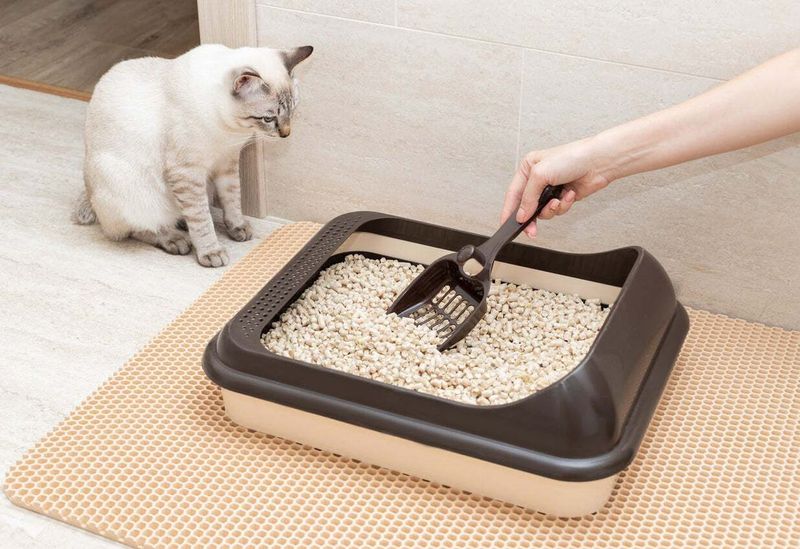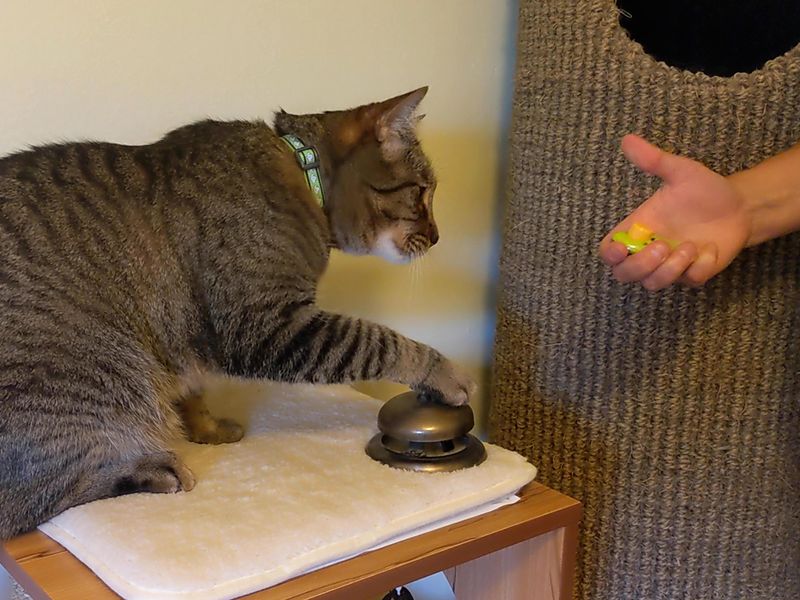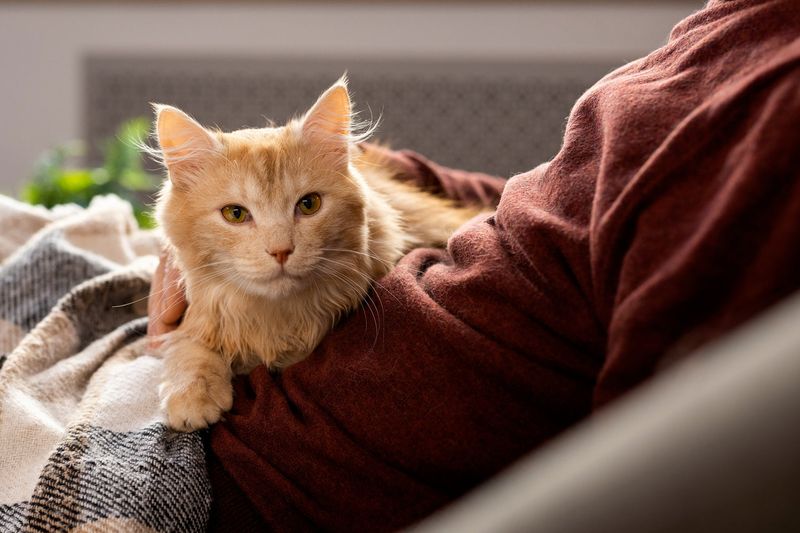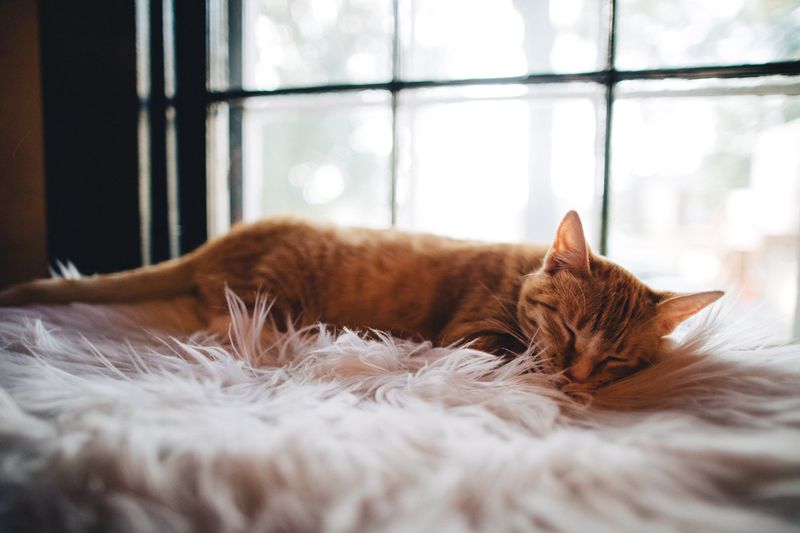📖 Table of Content:
- 1. Slow Blinking Conversations
- 2. Consistent Feeding Schedule
- 3. Elevated Resting Spots
- 4. Gentle Greetings After Absence
- 5. Scent-Marking Opportunities
- 6. Predictable Daily Routines
- 7. Respectful Petting Sessions
- 8. Quiet Retreat Spaces
- 9. Talking in a Soothing Voice
- 10. Playtime That Mimics Hunting
- 11. Respecting Their Territory
- 12. Gentle Introduction to New Things
- 13. Consistent Handling Methods
- 14. Clean Litter Box Maintenance
- 15. Positive Reinforcement Training
- 16. Familiar Scented Items During Change
- 17. Respecting Sleep and Rest Needs
Cats may seem independent and aloof, but they crave security and comfort just like we do. Understanding what makes your feline friend feel safe can transform your relationship and boost their overall well-being. These small reassurances might seem insignificant to us, but to cats, they’re essential signals that their world is stable and secure.
1. Slow Blinking Conversations
Cats communicate trust through their eyes. When you catch your cat staring, try slowly closing your eyes and reopening them. This gesture, often called a ‘cat kiss,’ tells your furry friend they’re safe with you. Many cats will return this slow blink, essentially saying, “I trust you too.”
This simple exchange creates a powerful bonding moment between you and your pet. Practice this gentle communication daily, especially during quiet moments when your cat seems relaxed. It’s their language of love that requires no words, just patience and attention.
2. Consistent Feeding Schedule
Food security ranks high on a cat’s priority list. Establishing regular mealtimes creates a dependable rhythm that cats can count on, reducing anxiety about when their next meal will appear. Even if you use automatic feeders, try to be present for at least one feeding daily.
Your presence during mealtime reinforces that you’re their provider and protector. Cats who know when to expect food spend less time worrying and more time engaging in natural behaviors like play and exploration. Their internal clocks are remarkably accurate – they’ll often remind you when it’s dinner time!
3. Elevated Resting Spots
Height equals safety in the feline world. Providing perches, cat trees, or cleared shelves allows your cat to survey their territory from a secure vantage point. From up high, they can monitor potential threats while feeling protected.
These elevated spots satisfy a deep instinctual need that dates back to their wild ancestors, who would climb trees to escape predators. Multiple resting spots throughout your home give cats options to match their changing comfort needs. The perfect cat perch offers both visibility and a sense of security – ideally against a wall rather than in the middle of a room where they might feel exposed.
4. Gentle Greetings After Absence
Rushing to cuddle your cat after returning home can feel overwhelming to them. Instead, allow your cat to approach you first when you’ve been away. This respectful distance acknowledges their need to assess the situation on their terms. Cats appreciate low-pressure reunions where they can sniff you and determine you’re the same trusted human who left.
Kneeling down to their level rather than looming over them creates a less threatening posture. Once they’ve completed their inspection, most cats will signal they’re ready for affection by rubbing against you or presenting their head for pets. This patient approach builds lasting trust.
5. Scent-Marking Opportunities
Cats feel secure when surrounded by their own scent. Allowing your cat to rub against furniture corners, doorways, and even you helps them create a scent map of their territory. This invisible marking system tells them they’re in a safe, familiar place.
Resist the urge to immediately wash bedding or blankets your cat frequently uses. Their scent on these items provides comfort and security, especially during stressful times like moving or when visitors arrive. When introducing new items to your home, try placing them near areas your cat has already scent-marked. This association helps your cat accept new objects more quickly as part of their secure territory.
6. Predictable Daily Routines
Consistency is key for cats. Sticking to a daily routine for feeding, play, and downtime gives them a sense of control and reduces anxiety over surprises. Notice how your cat may follow you from room to room during certain times of day – they’re participating in the routine you’ve established together.
These shared patterns strengthen your bond while providing structure. Even small consistencies matter: opening curtains at the same time each morning or sitting in your reading chair each evening creates touchpoints your cat can rely on. During necessary schedule changes, maintaining at least one familiar routine helps ease their stress.
7. Respectful Petting Sessions
Reading your cat’s body language during affection prevents unwanted handling. Most cats prefer brief, gentle pets focused on their cheeks, chin, and the base of their ears rather than full-body strokes. A swishing tail, flattened ears, or skin twitching are clear signals your cat needs a break from physical contact.
Respecting these boundaries builds trust that you won’t force unwanted attention on them. The best petting sessions end while your cat still wants more – leaving them looking forward to the next interaction rather than feeling relieved it’s over. This respectful approach helps cats feel they have control over physical contact, enhancing their sense of security.
8. Quiet Retreat Spaces
Every cat needs a designated safe zone where they won’t be disturbed. A cardboard box, covered bed, or quiet closet corner serves as a sanctuary when life becomes overwhelming. These hideaways allow cats to decompress on their own terms. The perfect retreat offers both concealment and a view of the surroundings.
Many cats prefer spaces with only one entrance so they can monitor approaching activity while feeling protected from behind. Teaching children and guests to respect these special areas as off-limits reinforces your cat’s sense of having personal boundaries that will be honored. During parties, home repairs, or other disruptive events, ensuring access to these retreats becomes especially important for your cat’s emotional well-being.
9. Talking in a Soothing Voice
The sound of your voice carries more meaning than you might think. Cats respond positively to high-pitched, gentle tones that contrast with the deeper, threatening sounds of potential predators. Regular conversations with your cat in this special voice build an association between your presence and safety. Narrating everyday activities like preparing dinner or folding laundry helps your cat track your movements through sound.
This ongoing commentary reduces startling surprises when you suddenly appear in their space. Cats quickly learn their names when spoken in this distinctive tone. Using their name before entering a room where they’re resting gives them time to prepare for your arrival, preventing the stress of unexpected encounters.
10. Playtime That Mimics Hunting
Structured play sessions fulfill your cat’s predatory instincts in a safe way. Using wand toys that mimic bird or mouse movements allows cats to stalk, pounce, and “capture” prey without the anxiety of actual hunting. The best play sessions follow the natural hunting sequence: stalking, chasing, catching, and “killing” the toy.
Ending with a small treat completes the satisfaction cycle and mimics the reward of a successful hunt. Regular play reduces stress hormones while building confidence in their abilities. Even older or less active cats benefit from modified play that respects their physical limitations while still engaging their hunting instincts. This outlet for natural behaviors creates deep contentment.
11. Respecting Their Territory
Cats map their world through invisible territorial boundaries. Honoring these personal spaces shows respect for their natural instincts. Pay attention to where your cat chooses to rest repeatedly – these spots hold special significance to them. Avoid suddenly rearranging furniture or changing their environment without a transition time.
When changes are necessary, moving items gradually or transferring their scent to new objects helps maintain their sense of security. Multiple resources throughout the home prevent territorial stress in multi-cat households. Each cat should have access to separate feeding stations, litter boxes, and resting areas to reduce competition and the anxiety it produces. This resource abundance creates a peaceful kingdom for your feline royalty.
12. Gentle Introduction to New Things
Because cats are wary of unfamiliar situations, it’s important to introduce anything new slowly. Rushing the process can lead to lasting negative reactions. The carrier, often associated with stressful vet visits, can become a comfort zone when introduced properly. Leaving it out with comfortable bedding and occasional treats transforms it from a threat to a retreat.
New family members should allow cats to approach them first, offering a finger at cat-nose level for sniffing. This respectful introduction acknowledges the cat’s need to gather information before deciding if someone is trustworthy. Patient introductions build lasting positive relationships.
13. Consistent Handling Methods
How you physically interact with your cat matters tremendously. Supporting all four paws when lifting, approaching from the side rather than above, and avoiding grabbing creates predictable, comfortable handling experiences.
Cats remember negative handling and develop lasting wariness. Taking time to condition them to necessary procedures like nail trims through positive association prevents fear responses. Short, positive sessions build tolerance gradually. Teaching visitors, especially children, your cat’s handling preferences prevents unwanted surprises that damage trust. Most cats appreciate being given the choice to leave a handling session when they’ve had enough. This freedom of choice creates cats who seek interaction rather than avoid it.
14. Clean Litter Box Maintenance
Few things create more stress for cats than a dirty litter box. Regular scooping and complete changes provide the cleanliness that cats instinctively seek for elimination. Their sensitive noses detect impurities we might miss. Maintaining the same litter type and box location creates bathroom consistency cats depend on.
Any necessary changes should happen gradually, mixing new litter with old or placing a new box beside the familiar one before transitioning completely. Multiple boxes in different locations prevent anxiety about access, especially in multi-cat homes or larger spaces. The general rule of one box per cat plus one extra accommodates natural territory preferences while reducing conflict over this essential resource.
15. Positive Reinforcement Training
Positive reinforcement works well with cats. Rewarding the behaviors you want with treats or play encourages learning and strengthens your relationship. Short training sessions respect their attention span and prevent frustration.
Even five minutes of clicker training can mentally stimulate your cat while reinforcing that interactions with you lead to good things. Target training, where cats learn to touch a stick or your finger with their nose, builds a foundation for more complex behaviors. The confidence gained through these successful interactions transfers to other aspects of your relationship. Cats who learn through positive methods become more adaptable to life’s challenges.
16. Familiar Scented Items During Change
During unavoidable disruptions like moving or travel, familiar-smelling objects provide crucial comfort. A blanket or toy carrying your cat’s scent creates an island of familiarity in strange surroundings. This scent connection reduces stress hormones and provides emotional grounding.
When introducing cats to new environments, setting up a small room with their familiar items creates a secure base camp. From this safe zone, they can gradually explore expanded territory as their confidence grows. Synthetic feline pheromone products can supplement natural scent comfort during particularly stressful times. These products mimic the facial pheromones cats deposit when feeling secure in their territory, creating an artificial sense of familiarity that helps bridge periods of change.
17. Respecting Sleep and Rest Needs
Cats spend 12-16 hours daily sleeping, making quality rest essential to their well-being. Creating undisturbed sleeping spots away from household traffic honors this biological need. Cats who can rest deeply show fewer stress behaviors. Observing your cat’s preferred sleeping positions reveals important comfort information. Some cats stretch out when feeling secure, while others curl tightly to protect their vital organs when uncertain.
These postures offer insight into their current sense of safety. Allowing cats to complete their sleep cycles without interruption shows respect for their natural rhythms. The trust built through this consideration extends to waking interactions. Cats who know their rest will be protected become more confident and sociable during active periods.
